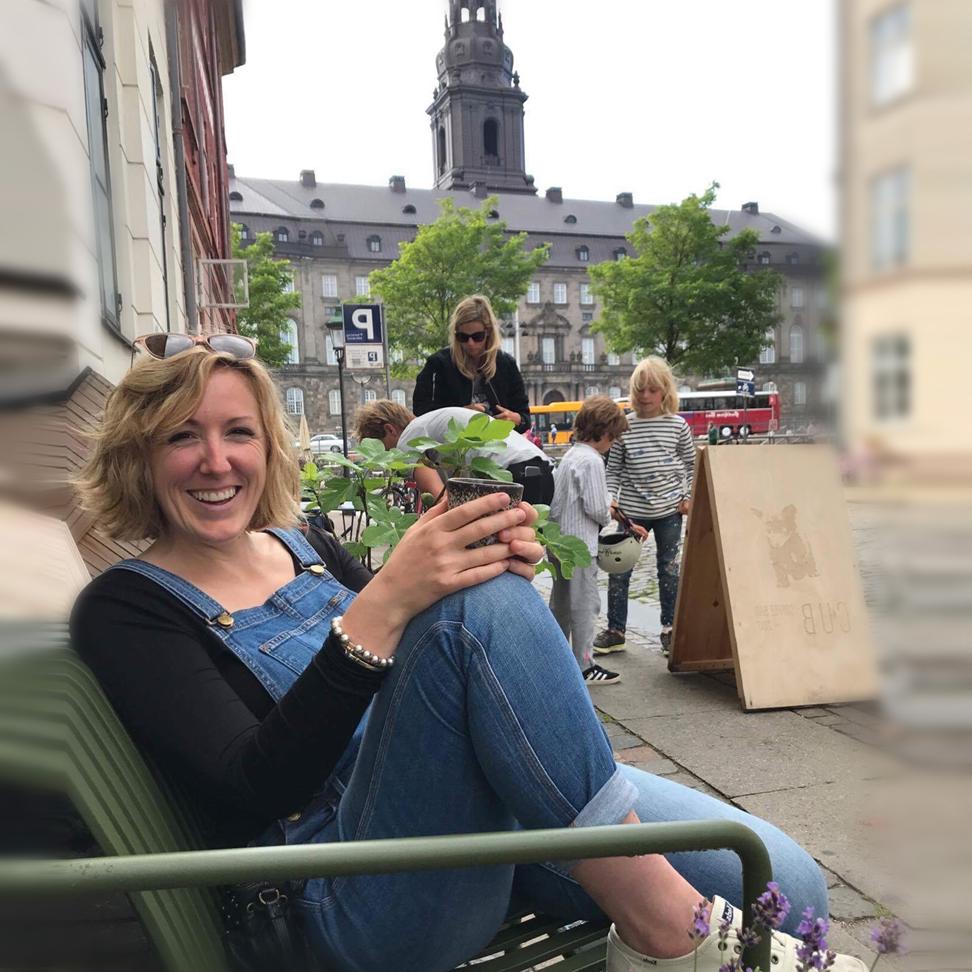Across our vast planet, there are places so isolated, where “getting away from it all” is an understatement. You may want to arm yourself with patience when boarding on the epic trips to get to these places sometimes a week’s transport away from other civilisations.
But no land is too far for an adventurous traveller! Have a look at our some of our favourite remote places on the edge of the world.
Tristan da Cunha – British Overseas Territory of Tristan da Cunha
Talk about remote – welcome to the most remote inhabited island in the world, Tristan da Cunha
Over 2,400 kilometres south-west from Cape Town, the most remote inhabited archipelago in the world, Tristan da Cunha, juts out from the sea, dominating the horizon with its volcano – the Queen Mary’s Peak. Only once has its eruption, in 1961, resulted in the necessity to evacuate the entire population; today it is a safe yet challenging climb to its summit of 2,062 metres.
Life on the island for the 300-or-so residents revolves around farming and fishing. Come during the summer months (December-March) and you may be feasting on the Tristan rock lobster.
Nature-lovers – head to the shores to spot northern rockhopper penguins, whales and dolphins. Collectors – hunt for unique handicrafts, postage stamps and coins in the local shops. As for digital junkies – only one internet café provides for the entire islands web access and there is no mobile phone coverage, so consider disconnecting for a few days instead.
Get there: Aboard a shipping boat or fishing boat, visitors may travel around 6 days to get to Tristan da Cunha from Table Bay Harbour in Cape Town. Given only a few ships service this route, visitors need to wait a few weeks at a time before boarding their ride home.
Check shipping boat schedules to see approximate departure and arrival dates. Once you have an idea of your schedule, contact the Island Council to ask for permission to land. As there is no port of dock on the island, plan on getting slightly wet aboard the small zodiacs that bring you as close to shore as possible.
Longyearbyen – Svalbard, Norway
Look out for polar bears as you hike through the vast wild area surrounding Longyearbyen
Welcome to the world’s northern-most town! Longyearbyen was established in 1906 as a mining town booming on coal exploitation. The population of over 2,000 people still mainly practice coal mining, but also geological research and meteorology, and polar bear spotting. Reindeer, polar foxes, and the majestic polar bear are familiar faces on the streets of Longyearbyen. There’s no getting lost as the city has no street names, just refer to each building and mine by their numbers.
Visit Svalbard Church in Gamle Longyearbyen (Old Town), and nearby keep track of the time with the 24-hour sundial as the midnight sun (a sun that never sets) constantly floats over the city during the summer (April-August). Once the summer heat of a whopping 7°C starts to chill, ring in the dark winter months with the annual Dark Season Blues festival in late October.
Get there: Catch a flight to Svalbard Airport Longyear from Tromsø all year round, or direct flights from Oslo during the summer season.
Siwa Oasis – Western Desert, Egypt
In the heart of the Egyptian desert, the Siwa Oasis hides the Temple of the Oracle
The sun is at its zenith in the Western Desert near Libya, but the shade of the palms and olive trees feel heavenly as you dip into the freshwater springs. Unlike a heat wave mirage you may imagine when you hear the word oasis, Siwa is a real place and a famed location since the 6th century BC. Close to the Temple of the Oracle Amun, dedicated to Zeus, Siwa was a destination for rulers seeking advice or a target for armies looking to destroy its power. The temple is in ruins, but still visible at the nearby village Aghurmi.
The oasis is also prized for the divine crystal-clear waters of Cleopatra’s pool where you can soak while sipping on Egypt Siwan Tea (a local red tea) and Siwa Dates. Sitting nearly 600 kilometres from Cairo, Siwa profited from its remote location in the heart of the desert, preserving its authenticity and Sufi culture (religious mysticism), demonstrated in the Sufi chants during evening dhikr circles.
Get there: You can catch a direct night bus from the Cairo Gateway Bus Station to Siwa.
Macquarie Island – Australia
Penguin-watching is inevitable with a flock of 850,000 pairs of Royal Penguins roaming along the coast of Macquarie Island
As you walk along the walking trails around the uninhabited island, the strong winds thrusting sea mist on your cheeks, you’ll experience what it’s like to explore the middle of nowhere. Isolated by 1,500 kilometres of sea, the Macquarie islands sit halfway between Australia and Antarctica. But you won’t be alone – accompanied by a Tasmanian park ranger, you’re likely to feel surrounded when encroaching on a vast population of wild penguins and seals, the real kings of this island.
An estimated 850,000 pairs of Royal Penguins, an endemic species, rule these grounds and are one of the world’s largest flocks of seabirds. The curious fellows may approach visitors but it is encouraged to avoid contact for the sake of conservation. The bull elephant seals put on a show as specimens of over 1000 kilos fight, causing a raucous on the shore. The island and its animal inhabitants are protected by their inscription on the UNESCO World Heritage List.
Get there: You can book a trip aboard cruises with final destinations to Antarctica that often include a stopover in Macquarie Islands, departing from Hobart, Australia or Bluff, New Zealand. Most visits to the island are short stays of 1 or 2 days, with nights spent on the ship you have arrived in. As there is no port, the access to the island is done by zodiac or similar boats.
Oymyakon – Siberia, Russia
The cold landscape in January in Oymyakon
Could you imagine spending your holidays in the coldest, permanently inhabited village in the world? Even though the risk of freezing to death is real, you’ll find 500 or so people live here year-round enjoying stretches of glimmering white snow during reindeer hunts, ice fishing expeditions, or dips in natural hot springs.
Just shy of the Arctic Circle, Oymyakon is a vast area of permafrost, with grounds unable to grow crops. Your diet here will consist of mostly reindeer and horse meat or horse-blood flavoured pasta.
As radically cold as the winters may be with record-breaking lows below -60°C, the summer heat can reach the other side of the spectrum with 30°C on certain days (June-August), but the season can be generally quite mild and pleasant.
Get there: The nearest major city, Yakutsk, is a two-day (930-km) drive away.
Floreana – Ecuador
Just another day of visitors and another photo op for the sea lions on Floreana
The Galapagos Islands are what Ecuadorian getaway dreams are made of. Exploring the lush flora and hopes of spotting a giant tortoise attract over 150,000 visitors per year. Grab your snorkel and board the next day cruise out of the main island San Cristobal to reach the airport-less haven Floreana. With a mere 100 person population, the island floats in a calm best experienced by exploring its natural wonders. Devil’s Crown, a collapsed volcanic cone, sets the scenery for exceptional snorkelling amidst sharks, sea lions, sea turtles, eels, and a variety of fishes.
One of the first islands exploited by human contact, the island has suffered the introduction of invasive feral goats and other herbivores. Conservation efforts by the Galapagos National Park are hard at work since 2007 to restore and sustain Floreana’s devastated native wildlife. Today, you’ll witness healthy populations of hawks, finches, and Galapagos racer snakes.
Odd disappearances and mysterious deaths punctuate the stories of the island’s first settlers. For long the only hotel on the island with the only functioning telephone, descendants of the first family to live in the Galapagos run the Pension Wittmer. Sunbathe on two contrasting beaches at Cormorant Point – Flour Beach made of fine, crushed coral, or Green Sand Beach coloured green by the olivine crystals. Just don’t forget to stop by the old post office used by whalers since 1793 – play postman and take with you the letters you are able to deliver by hand.
Get there: Access to the Galapagos Islands is done by plane from Guayaquil on mainland Ecuador to the island of San Cristobal and runs a few times a week. The Galapagos archipelago is ideal for island hopping if the budget permits, as the islands are most regularly accessible by cruises or ferry. The nearest islands offering transit by sea are Santa Cruz and Isabela.
Socotra – Yemen
A Yemeni boy stands next to the curious Dragon’s Blood trees endemic of Socotra
Across the Arabian Sea, around 400 kilometres from Yemen, lies Socotra, better known in Sanskrit as the island of bliss. Without an airport until 1999, the villages and landscape were spared from excessive comings and goings for many years. Remarkable trees populate the island, the most spectacular being the Dragon’s Blood tree with its umbrella shape, vein-like branches, and red sap used in paints and dyes. With endemic species found nowhere else in the world, Socotra has joined the ranks of UNESCO World Heritage Site.
More than a unique nature reserve, Socotra is home to 600 villages of clustered houses and a population of 40,000 people. When not hunting down the odd cucumber tree, enjoy the excellent surf, swim with barracudas and rays, or explore the depths of the Halah Cave. Plunged in complete darkness several hundred metres below ground, the metre-long stalagmites and stalactites have nothing to envy the trees above. Eco-tourism at its best – camp on the beach, barbequing against mountainous backdrops.
Get there: Due to ongoing conflicts in mainland Yemen, flights from Sana’a and Aden are not guaranteed. Recent news claims flights to Socotra are available from Abu Dhabi. By sea, boats reach Socotra in a day or so from Salalah, Oman.


